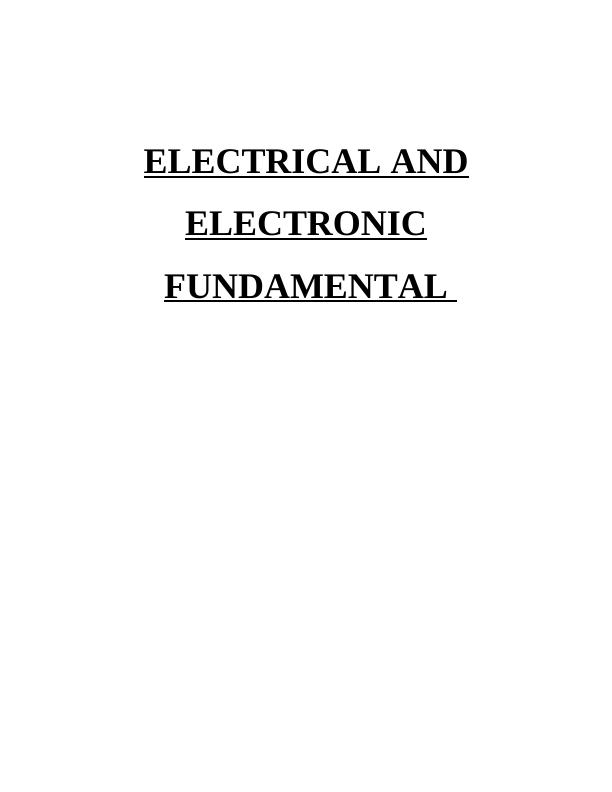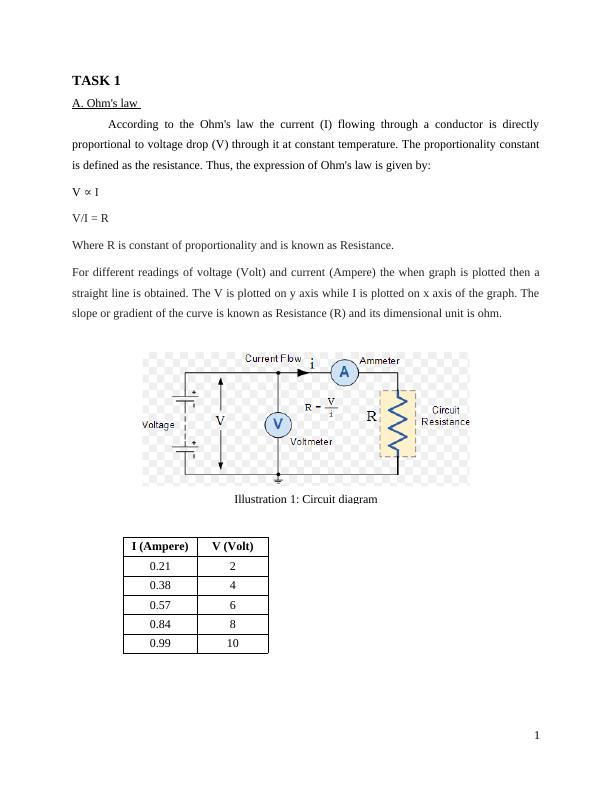Ask a question from expert
Fundamentals of Electrical and Electronics
19 Pages2814 Words203 Views
Added on 2020-11-23
Fundamentals of Electrical and Electronics
Added on 2020-11-23
BookmarkShareRelated Documents
ELECTRICAL ANDELECTRONICFUNDAMENTAL

TABLE OF CONTENTSTASK 1 ...........................................................................................................................................1A. Ohm's law .........................................................................................................................1B. Kirchhoff's current and voltage law (KVL and KC) ........................................................2C. Validation of Kirchhoff's law ...........................................................................................4D. Thevenin's theorem ...........................................................................................................6TASK 2............................................................................................................................................9A. Calculate ...........................................................................................................................9B. Phasor diagram ...............................................................................................................10TASK 3..........................................................................................................................................10A. Semiconductor action .....................................................................................................10B. Discrete semiconductor devices ......................................................................................13C. Performance and applications of bipolar junction transistor (BJT) and field effectivetransistor (FET) ...................................................................................................................14TASK 4..........................................................................................................................................14A. Difference between analogue and digital electronics .....................................................14B. Truth table for the given combinational circuit ..............................................................15C. Logic function for each case ...........................................................................................15D. Digital and analogue electronics .....................................................................................16E. Applications ....................................................................................................................16F. Electronics applications in terms of relative advantage ..................................................17

TASK 1 A. Ohm's law According to the Ohm's law the current (I) flowing through a conductor is directlyproportional to voltage drop (V) through it at constant temperature. The proportionality constantis defined as the resistance. Thus, the expression of Ohm's law is given by: V I ∝V/I = R Where R is constant of proportionality and is known as Resistance. For different readings of voltage (Volt) and current (Ampere) the when graph is plotted then astraight line is obtained. The V is plotted on y axis while I is plotted on x axis of the graph. Theslope or gradient of the curve is known as Resistance (R) and its dimensional unit is ohm. I (Ampere)V (Volt)0.2120.3840.5760.8480.99101Illustration 1: Circuit diagram

The slope R = V/I. In the figure highlighted slope = 7V / 0.7A = 10 Ohm Thus, between two points the slope can be calculated as : ΔV / ΔI Where ΔV is the potential difference between two points and ΔI is the current flowing betweentwo points. Thus, the slope at point V = 2V and I=0.2A is given by the gradient expression: R= (2-0) / (0.2-0) = 10 Ohm = Slope of the curve B. Kirchhoff's current and voltage law (KVL and KC) KVL:As per this law, the sum of potential differences in a closed loop must be equal to zero. 2Illustration 2: V-I plot for calculating slope

End of preview
Want to access all the pages? Upload your documents or become a member.
Related Documents
Charging and discharging a Capacitor Assignment 2022lg...
|14
|1598
|29
Solved Electrical Circuit Problems with Calculations and Formulaslg...
|21
|819
|197
The equivalent resistance for the ckt | Assessmentlg...
|14
|576
|16
Optimizing a Solution to a Modelling Problemlg...
|8
|4115
|281
Electrical and Electronic Engineering Problemslg...
|26
|2767
|56
Electrical Circuit Analysislg...
|16
|646
|59